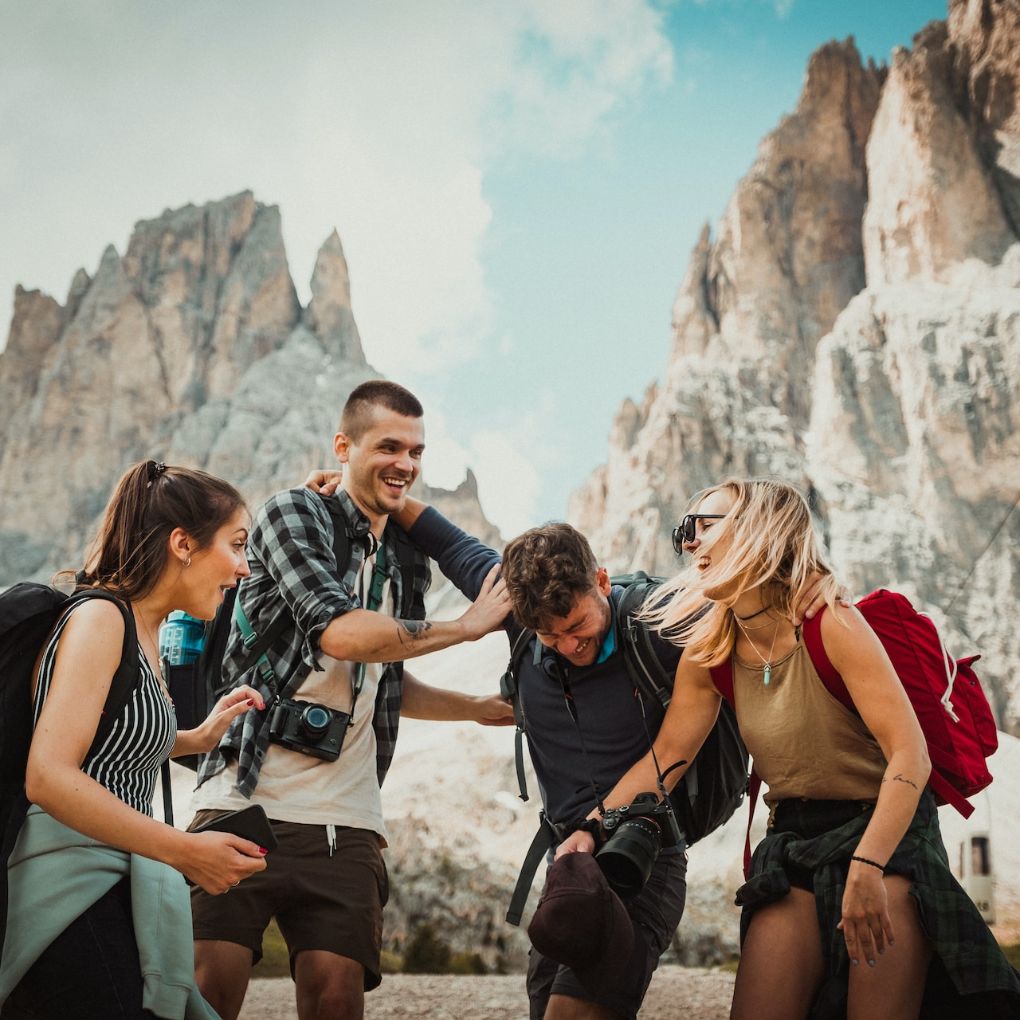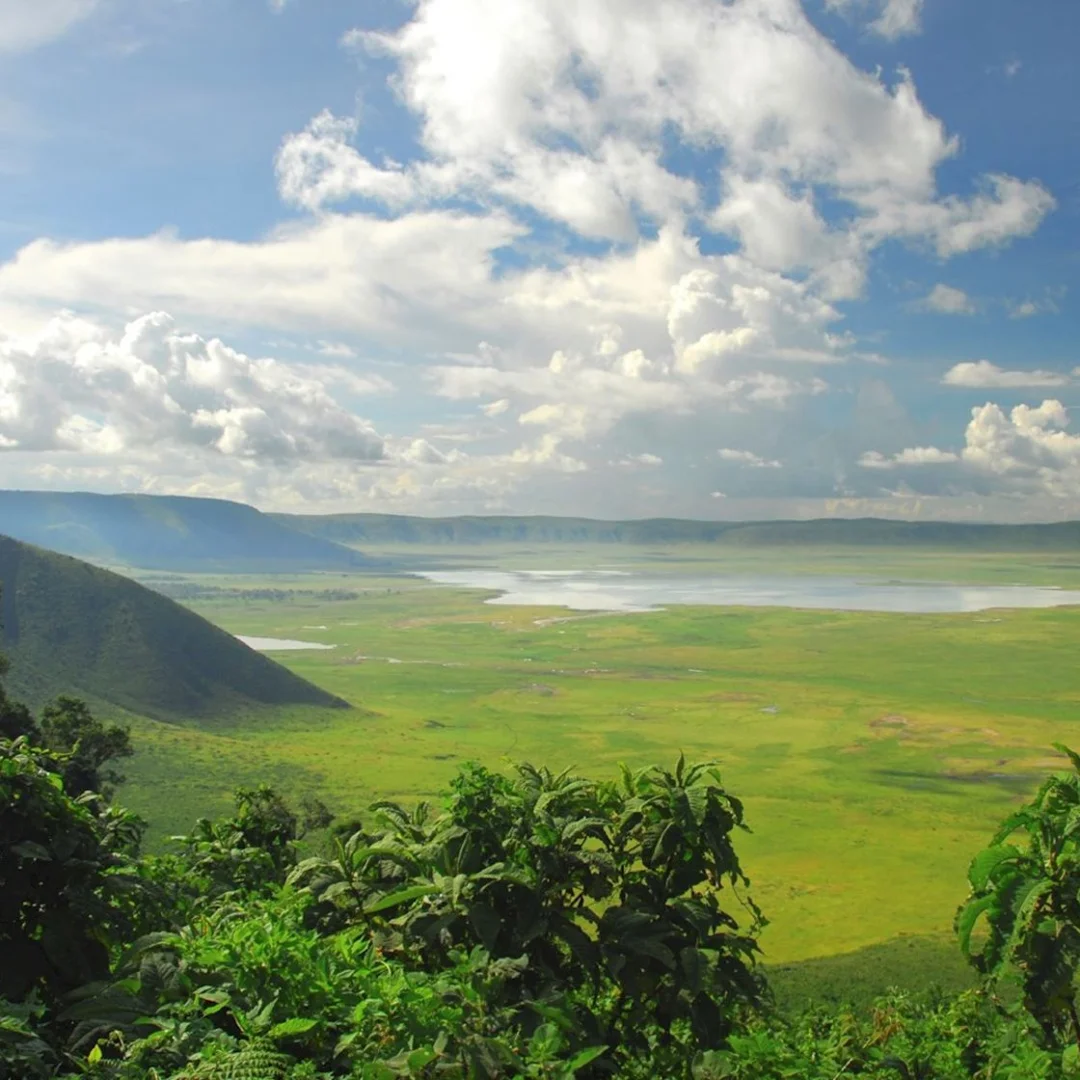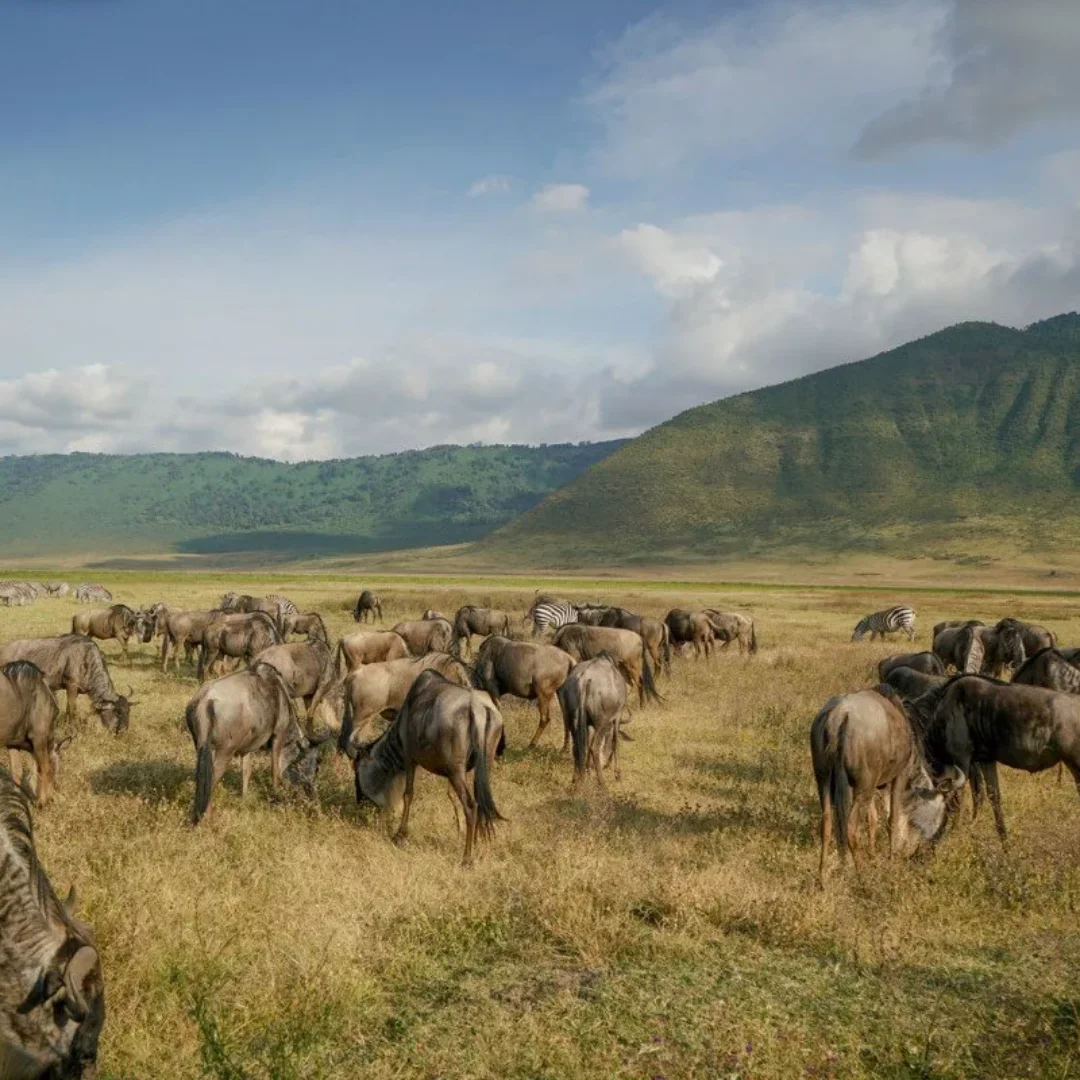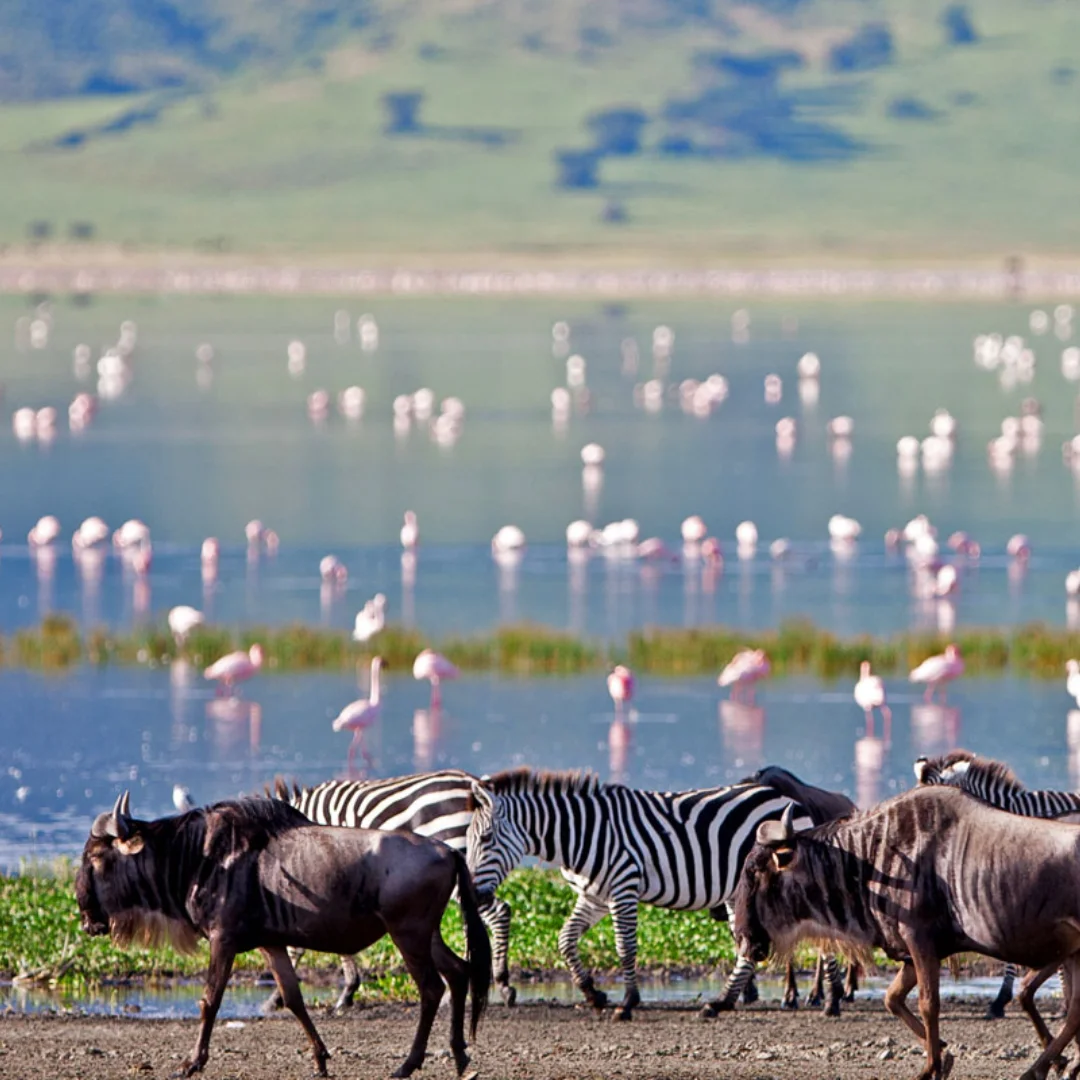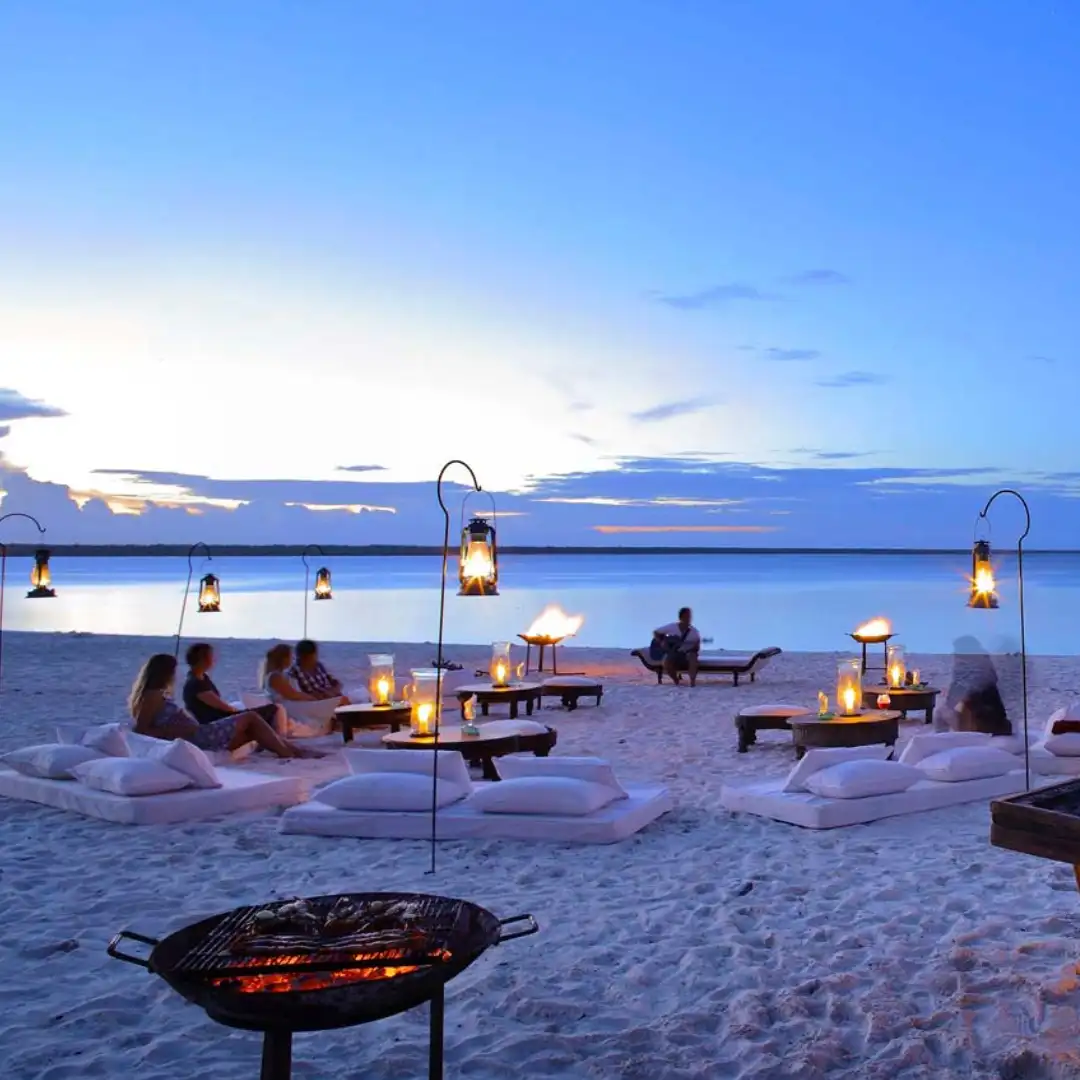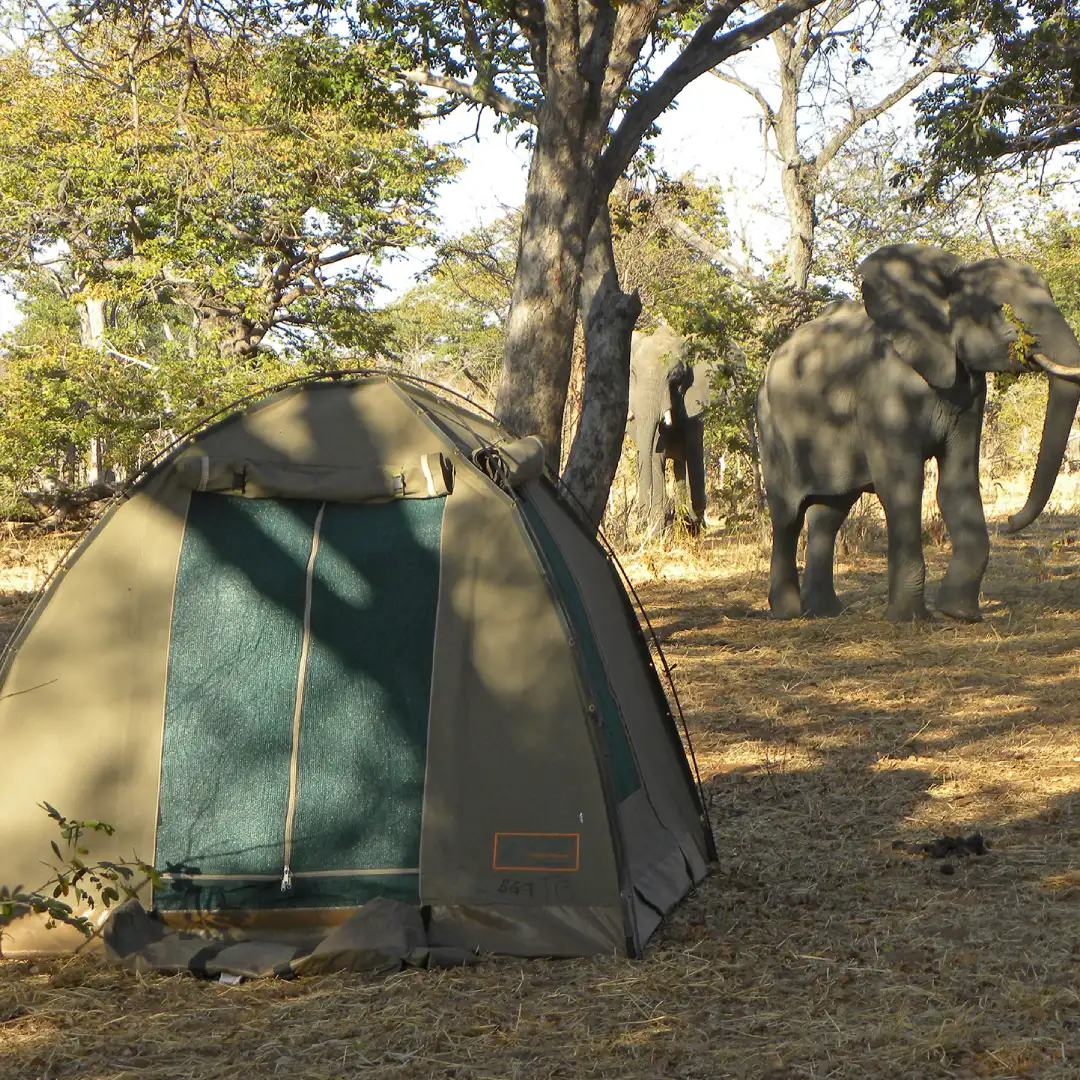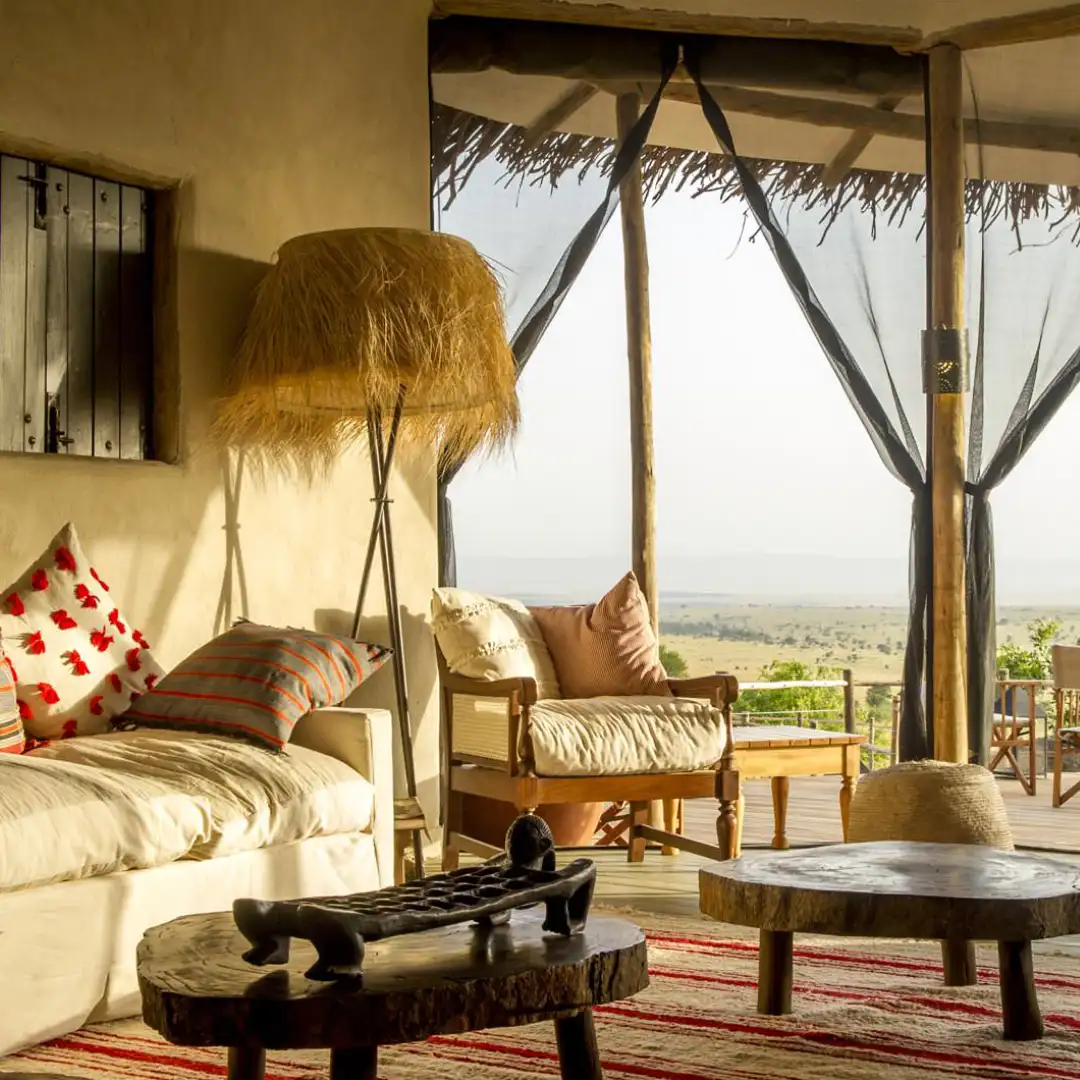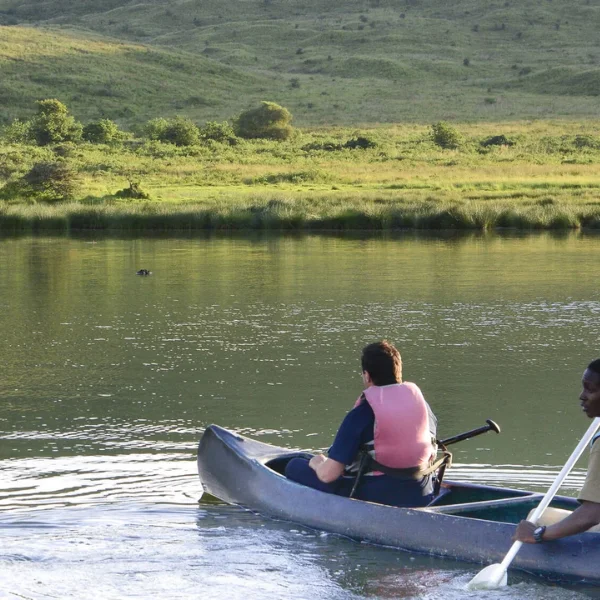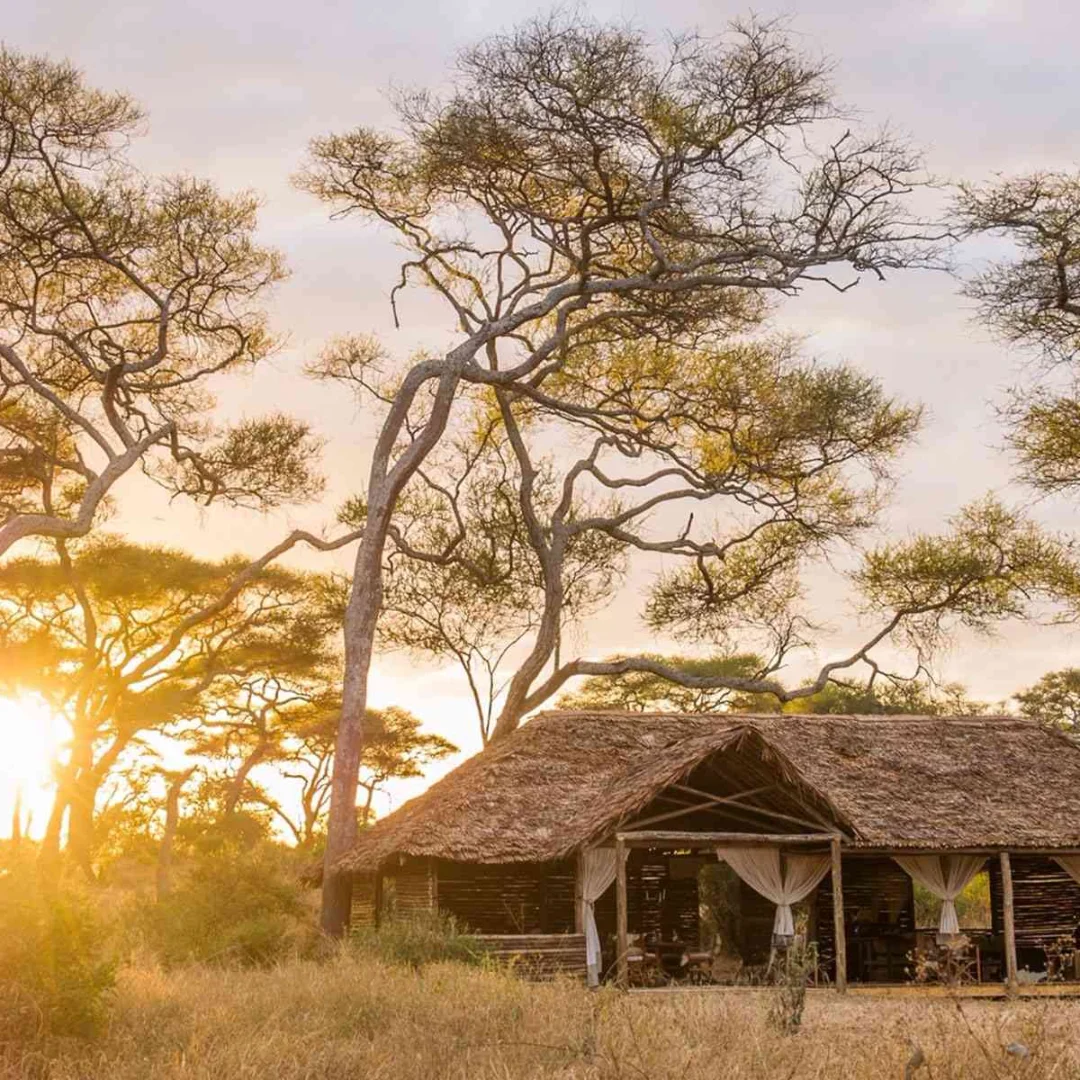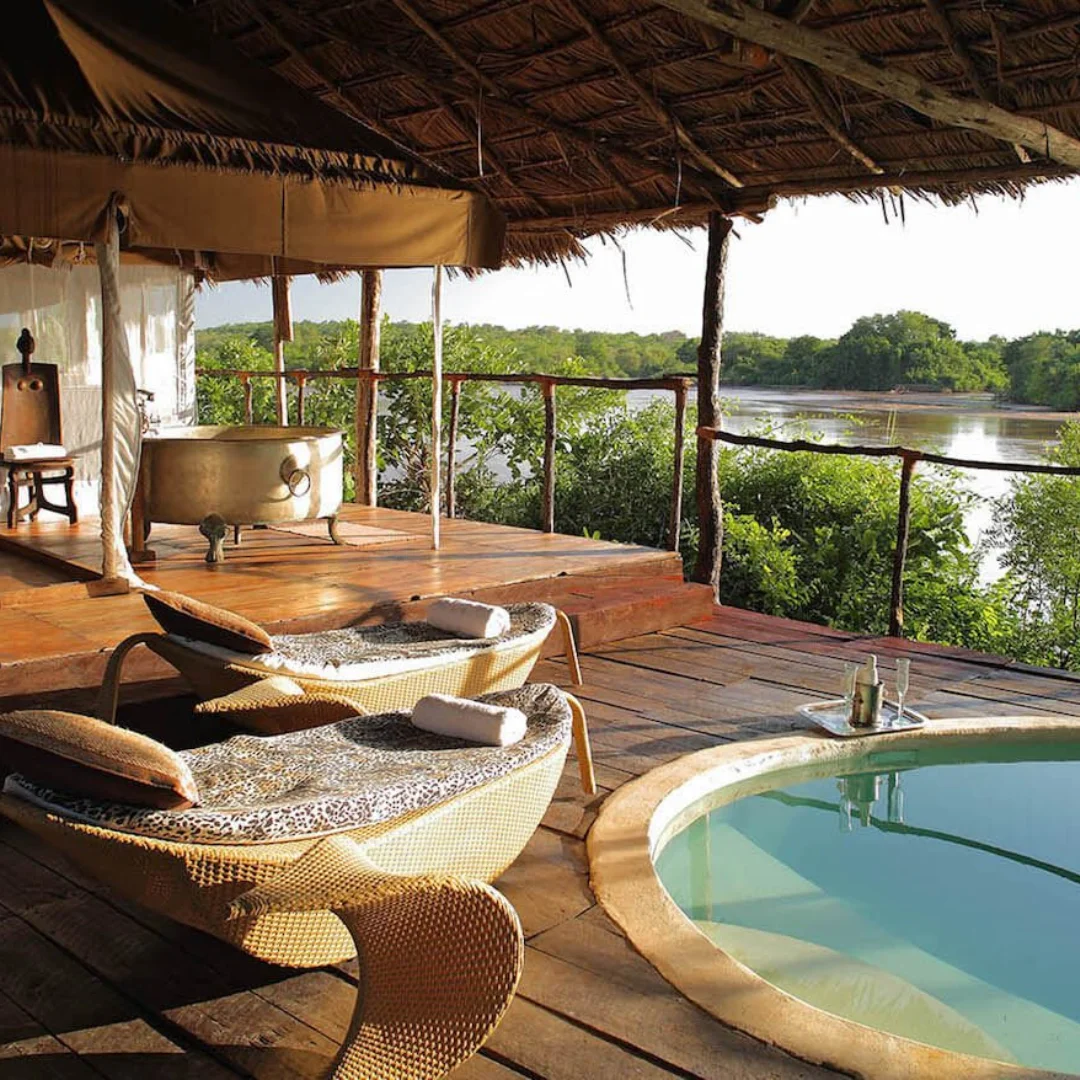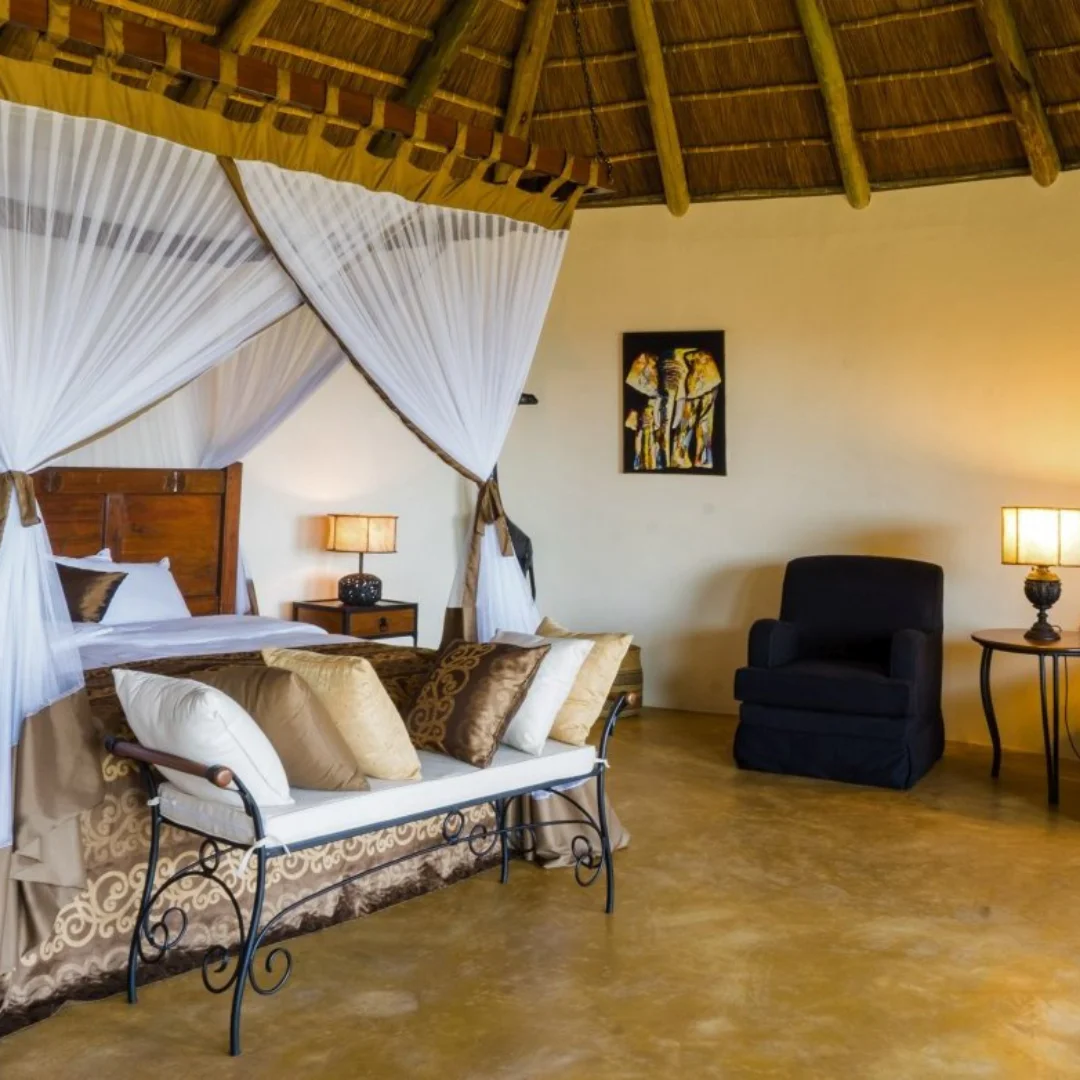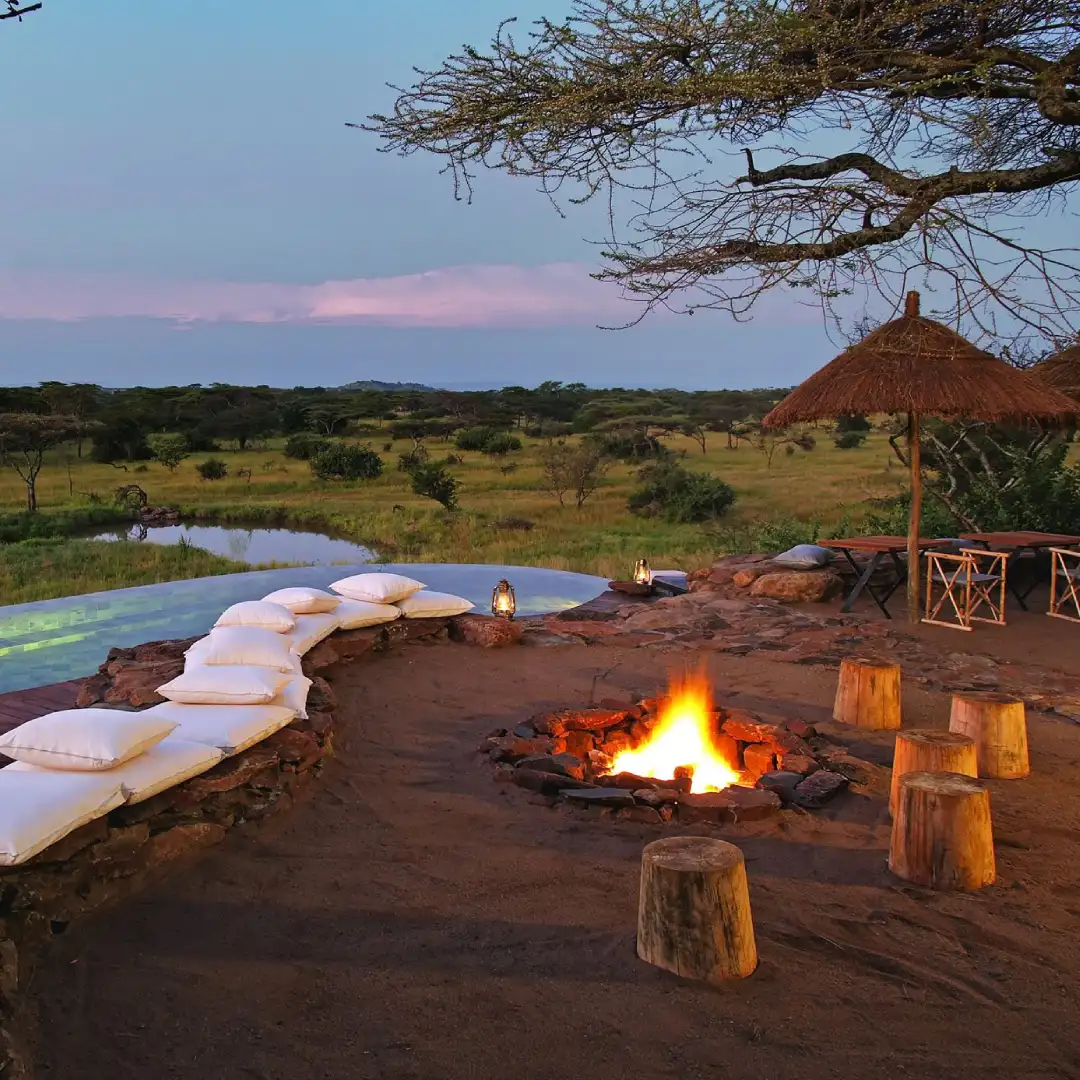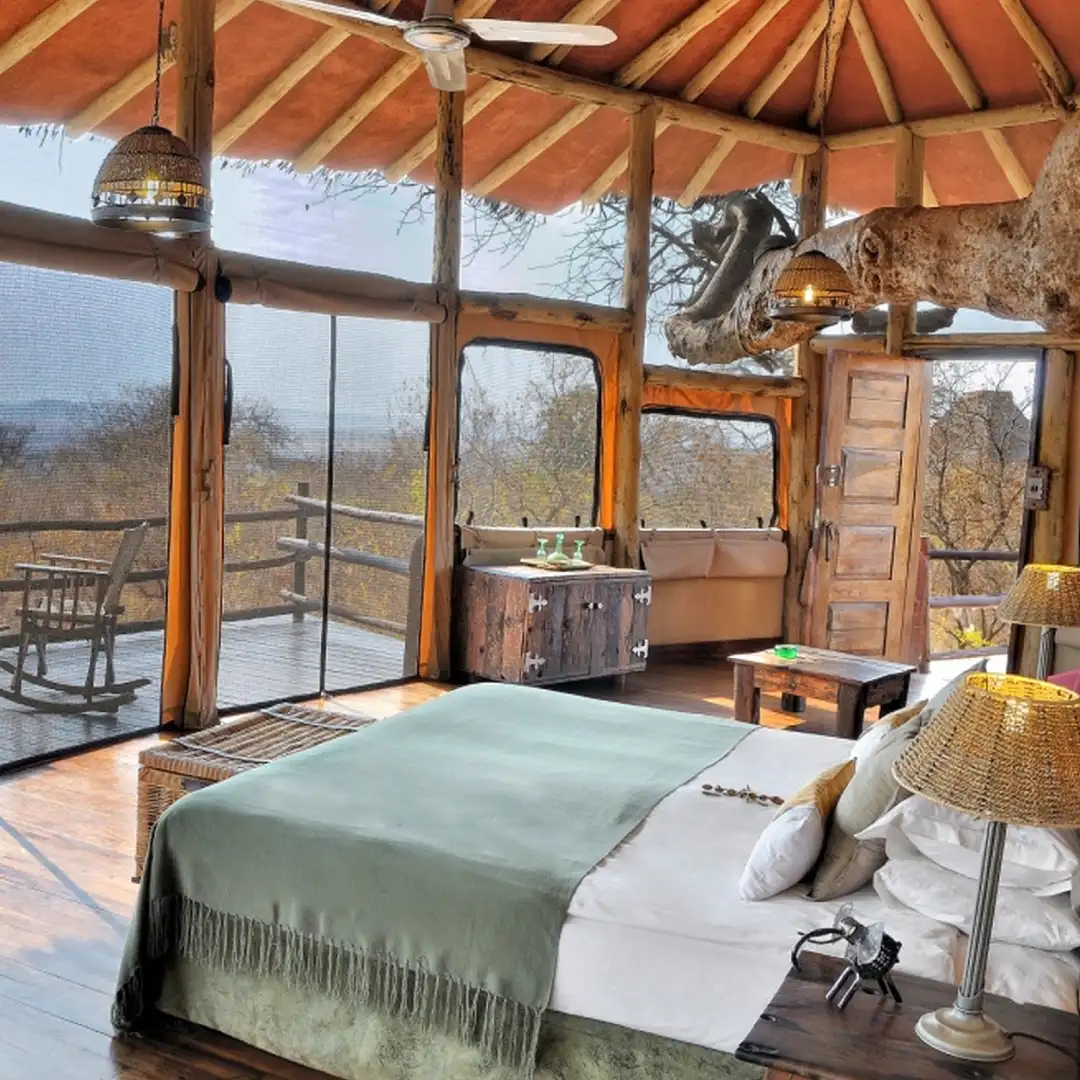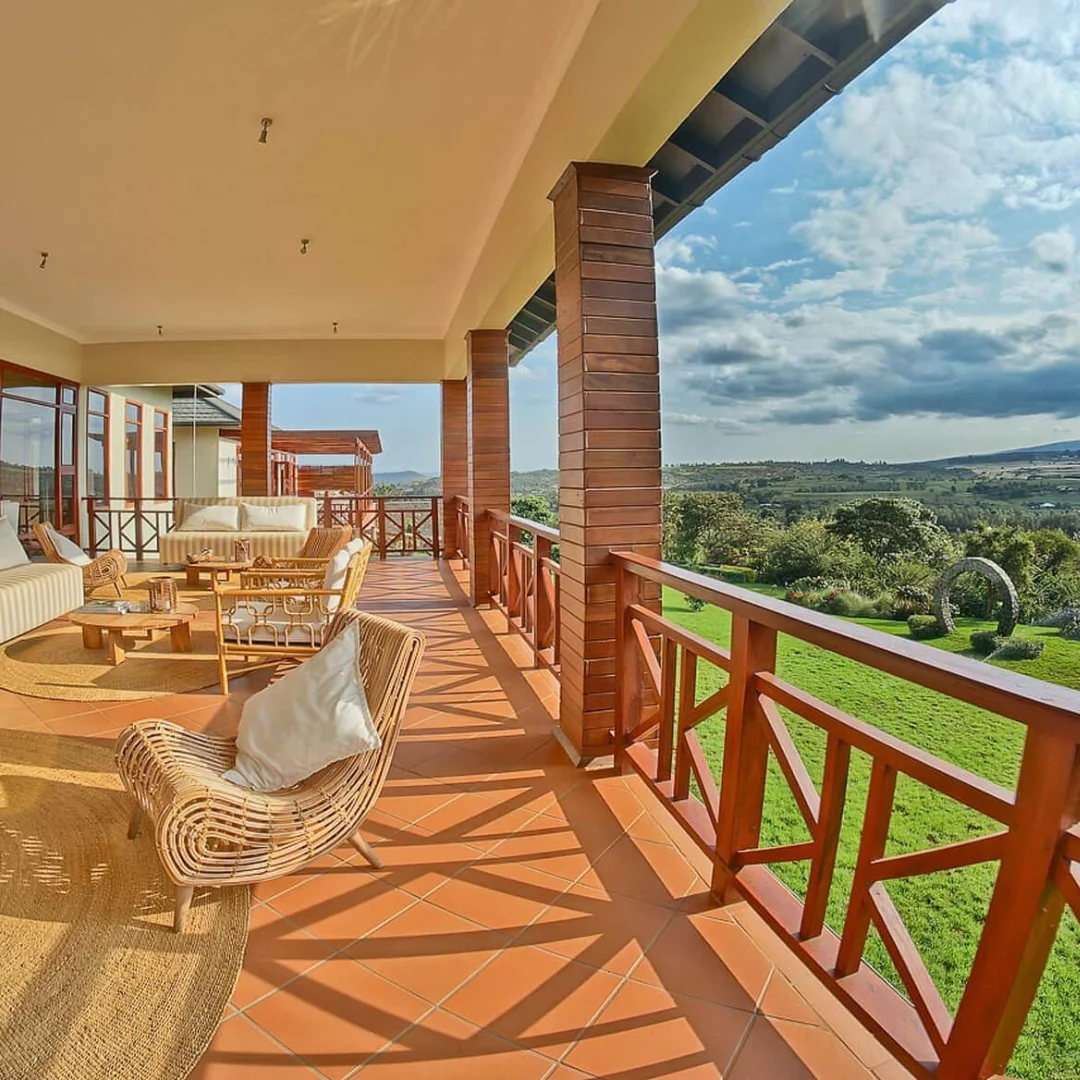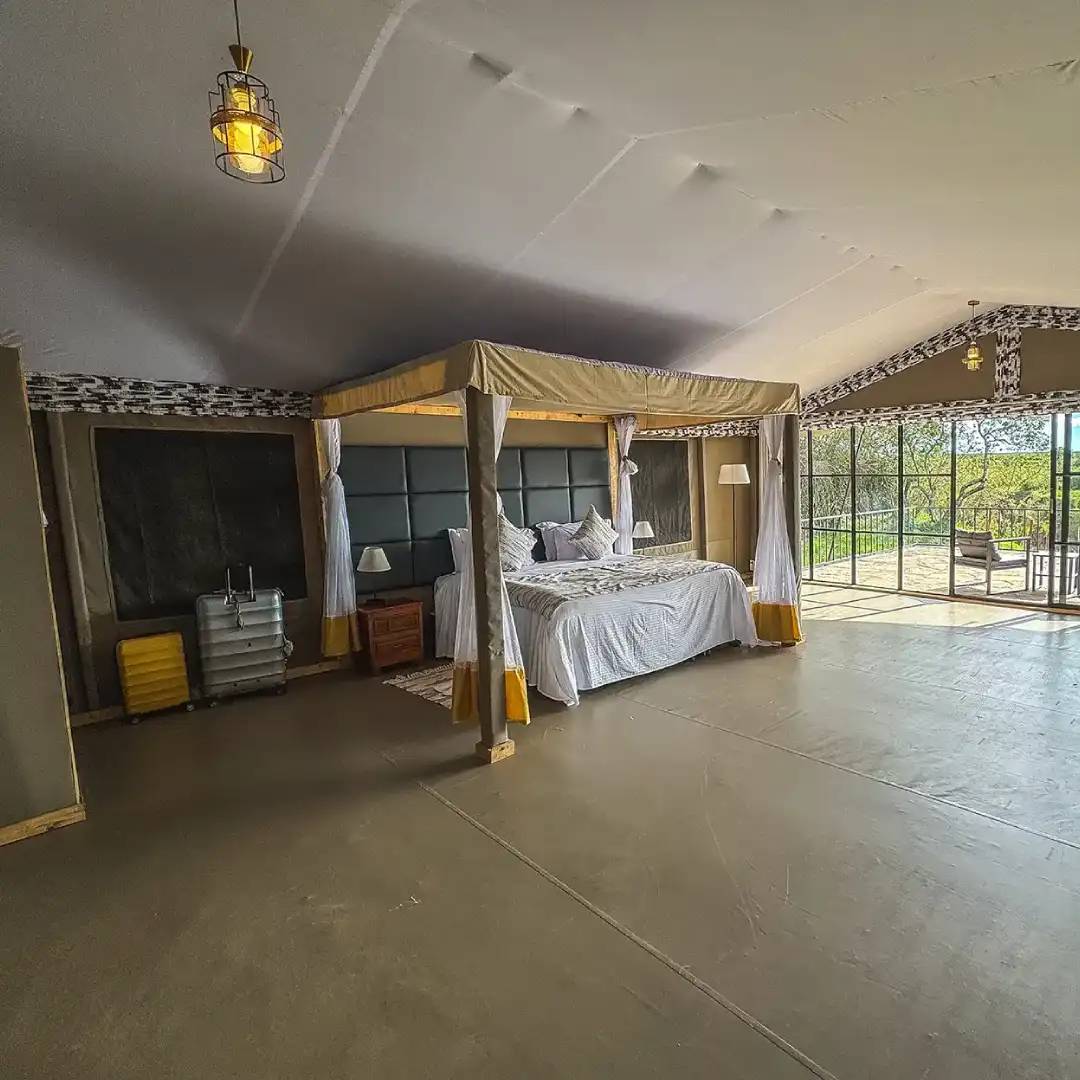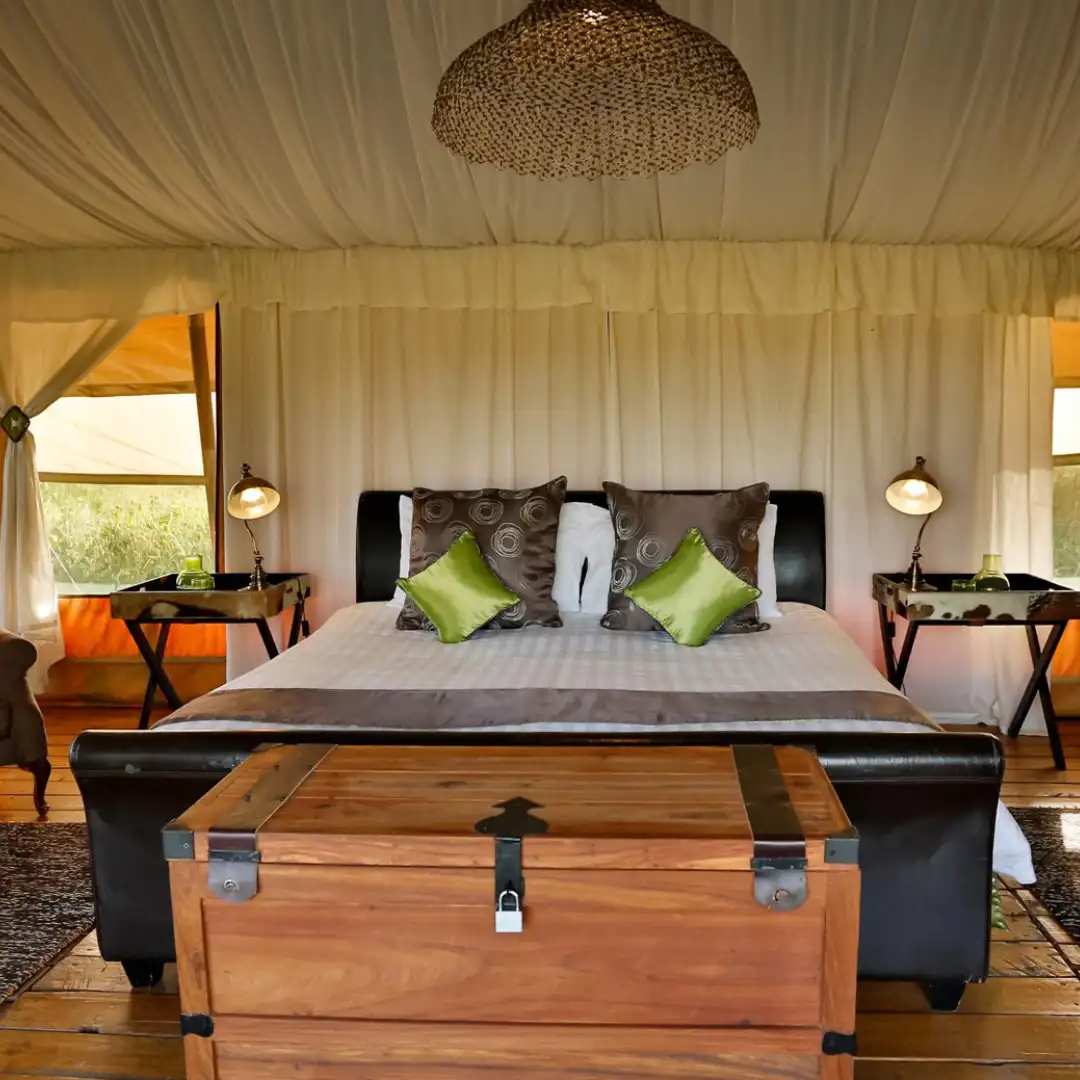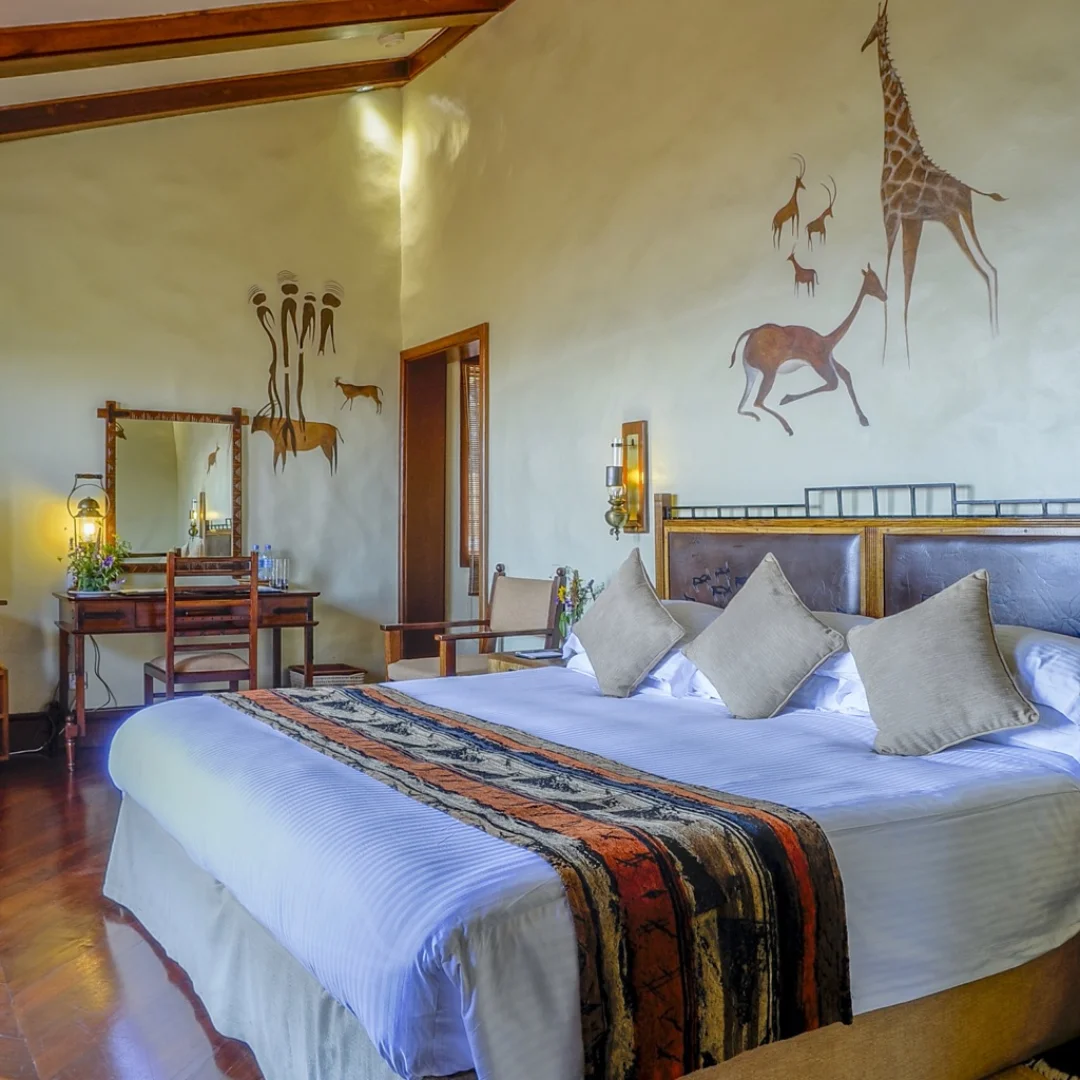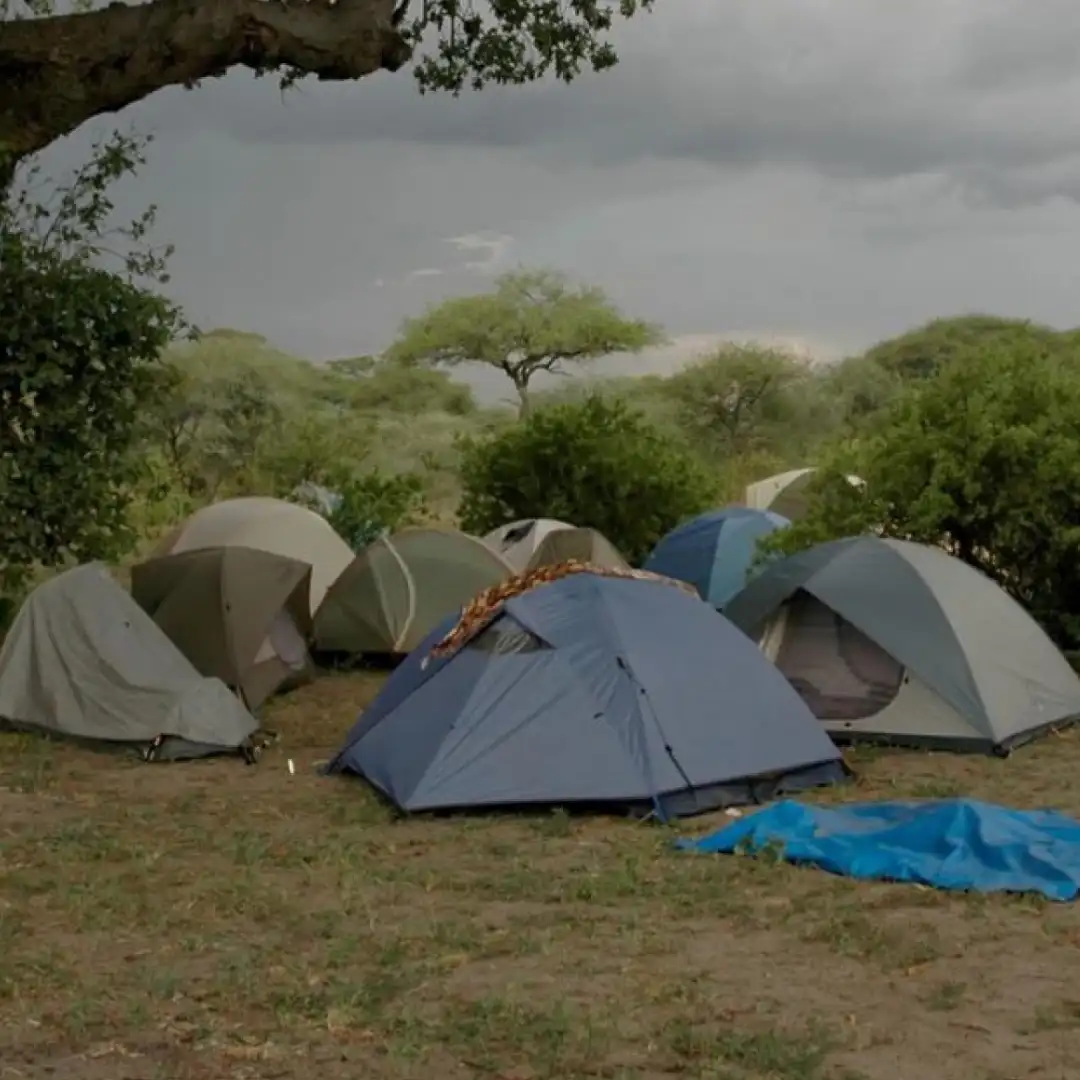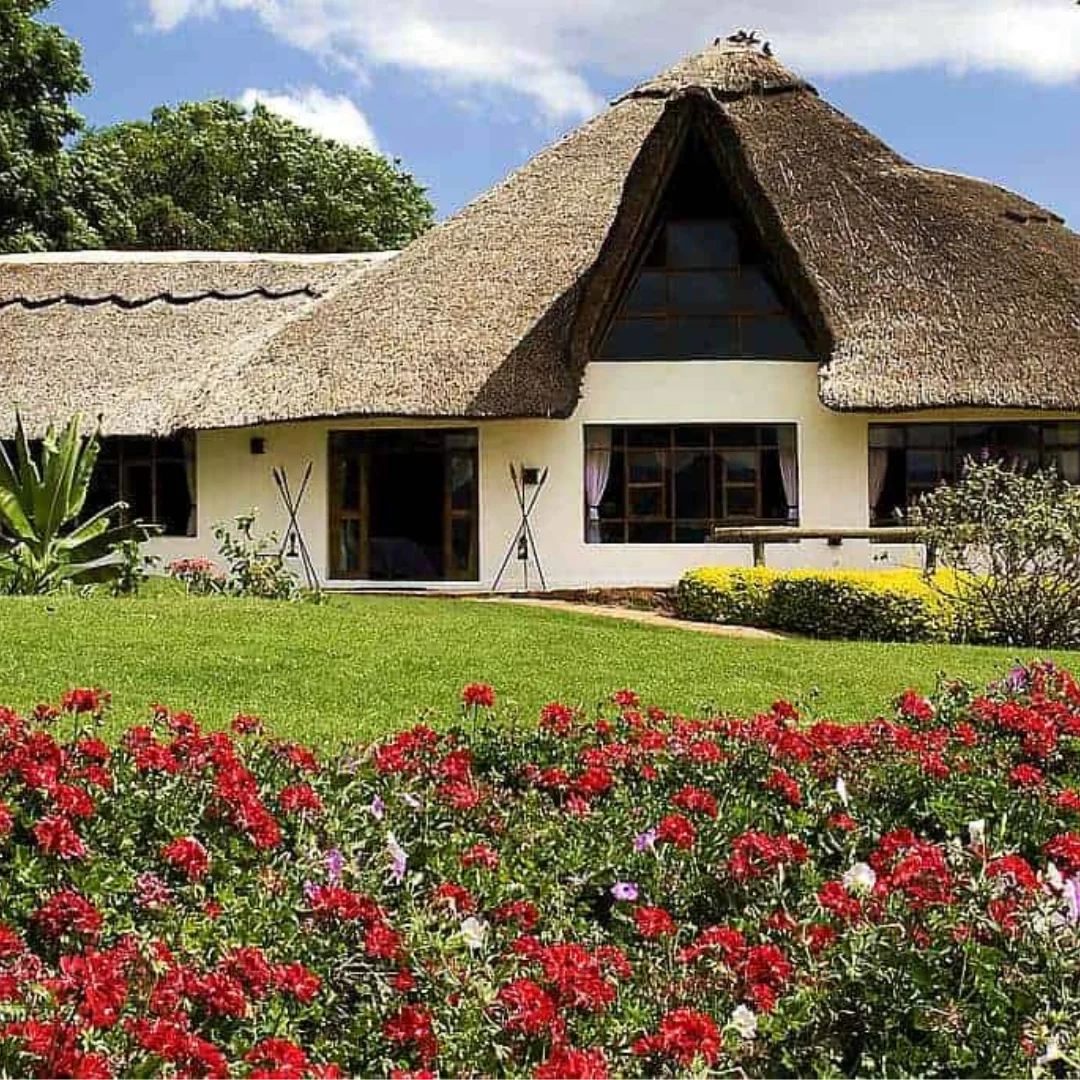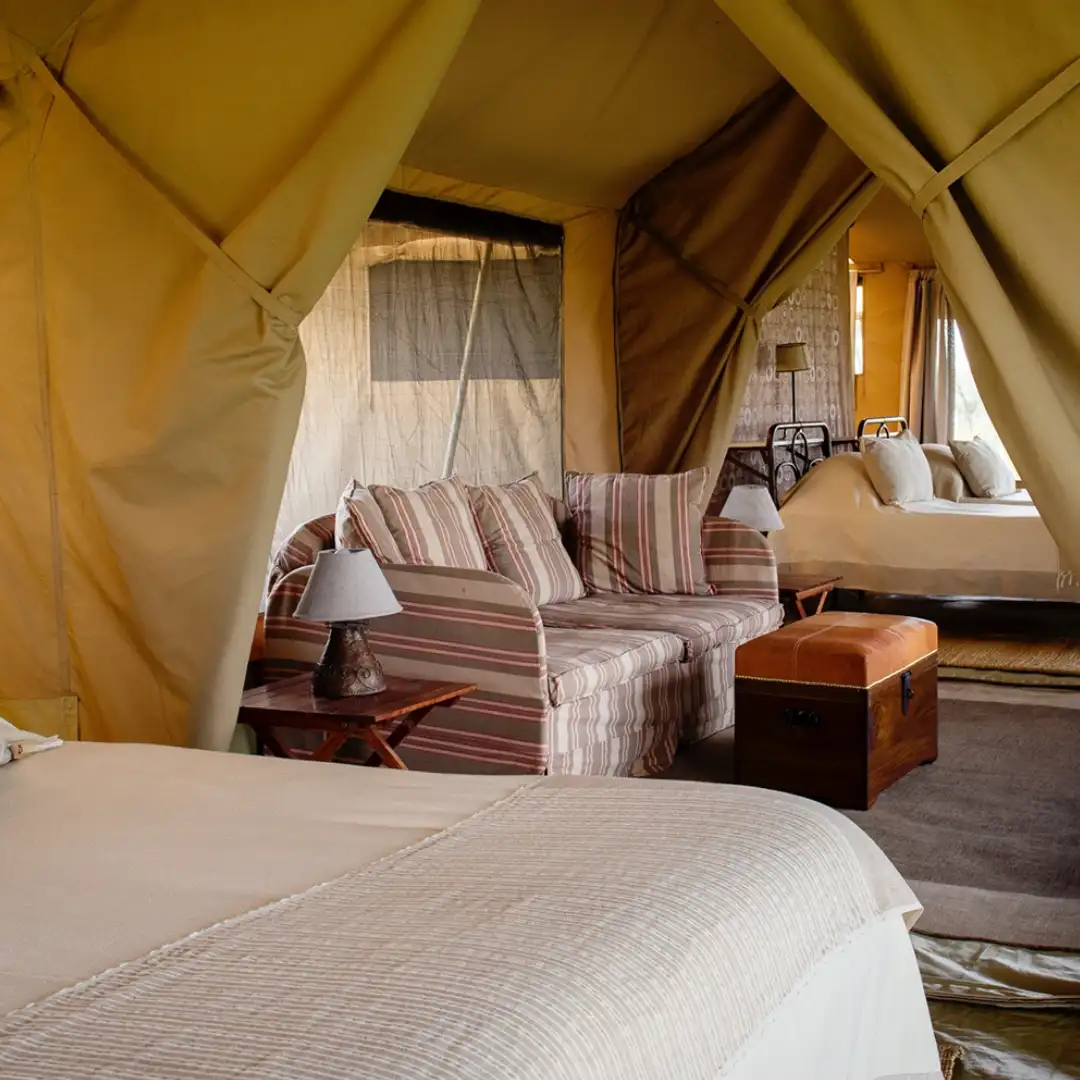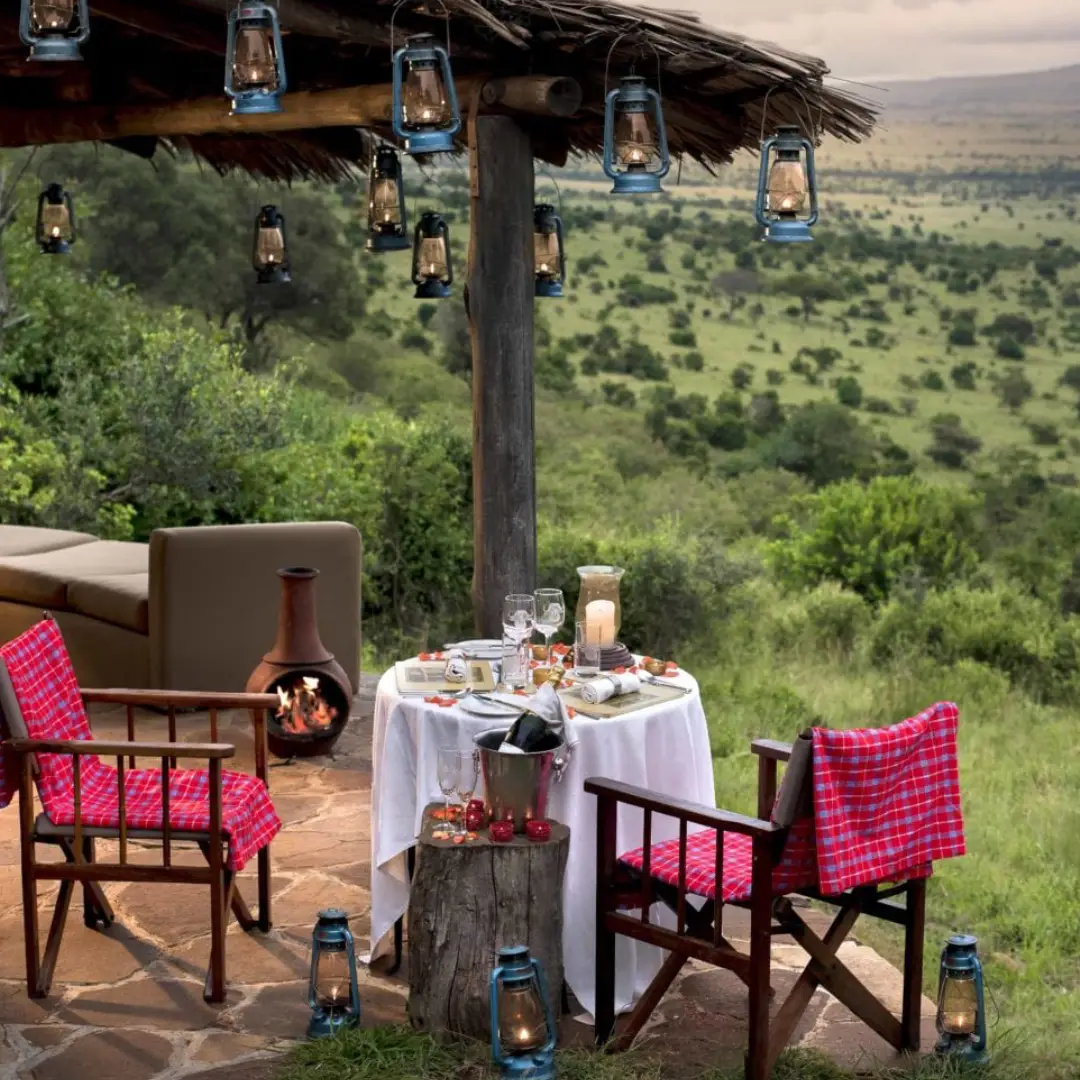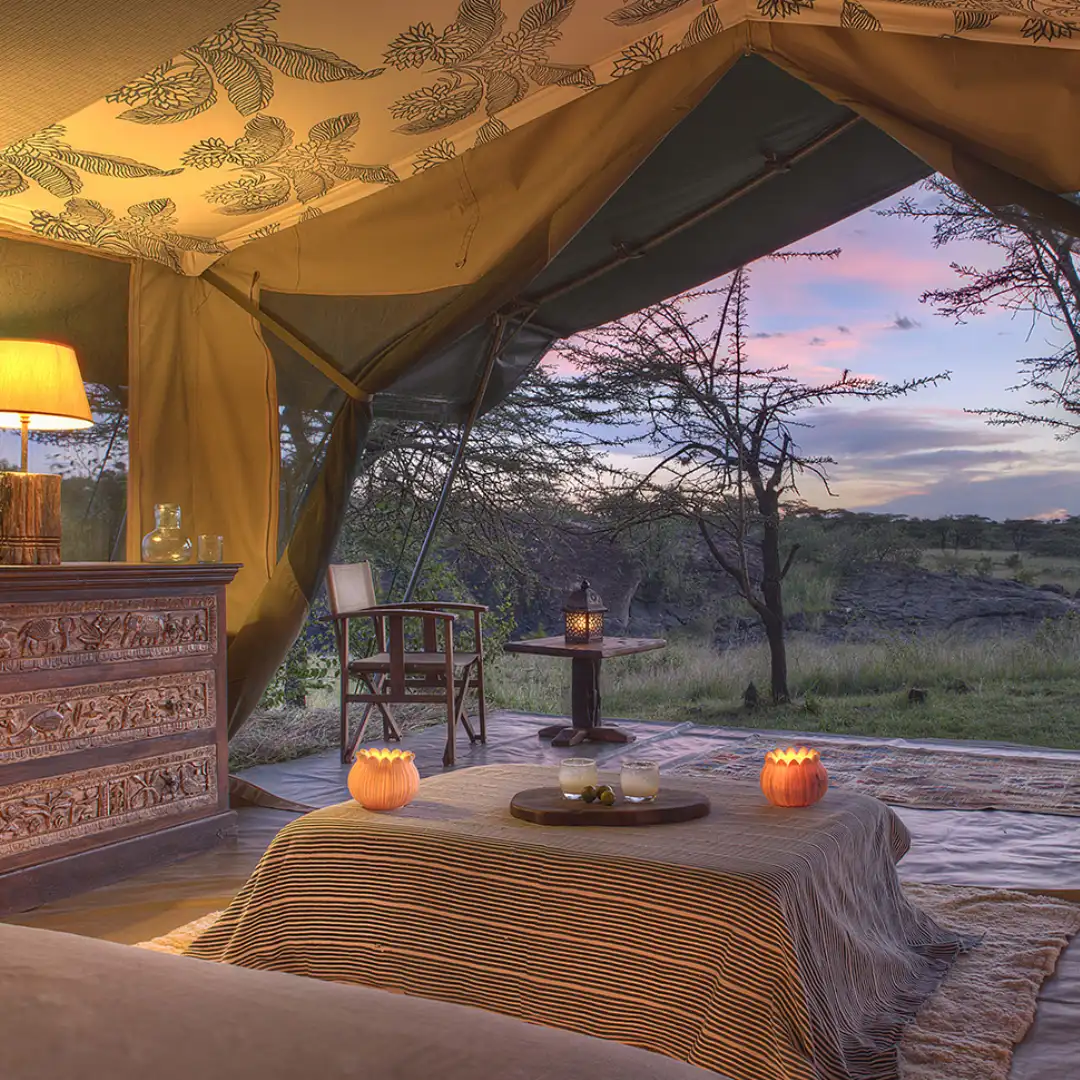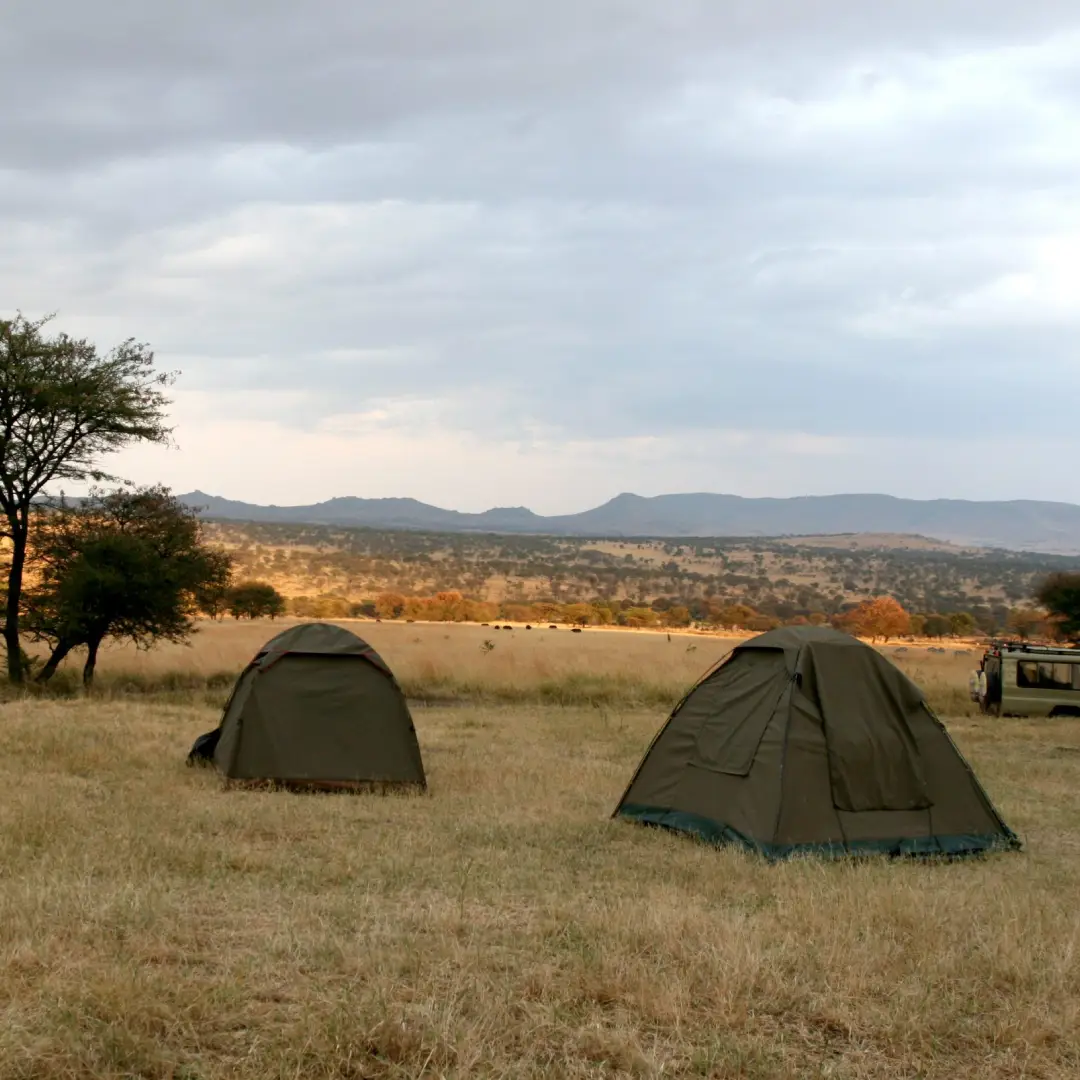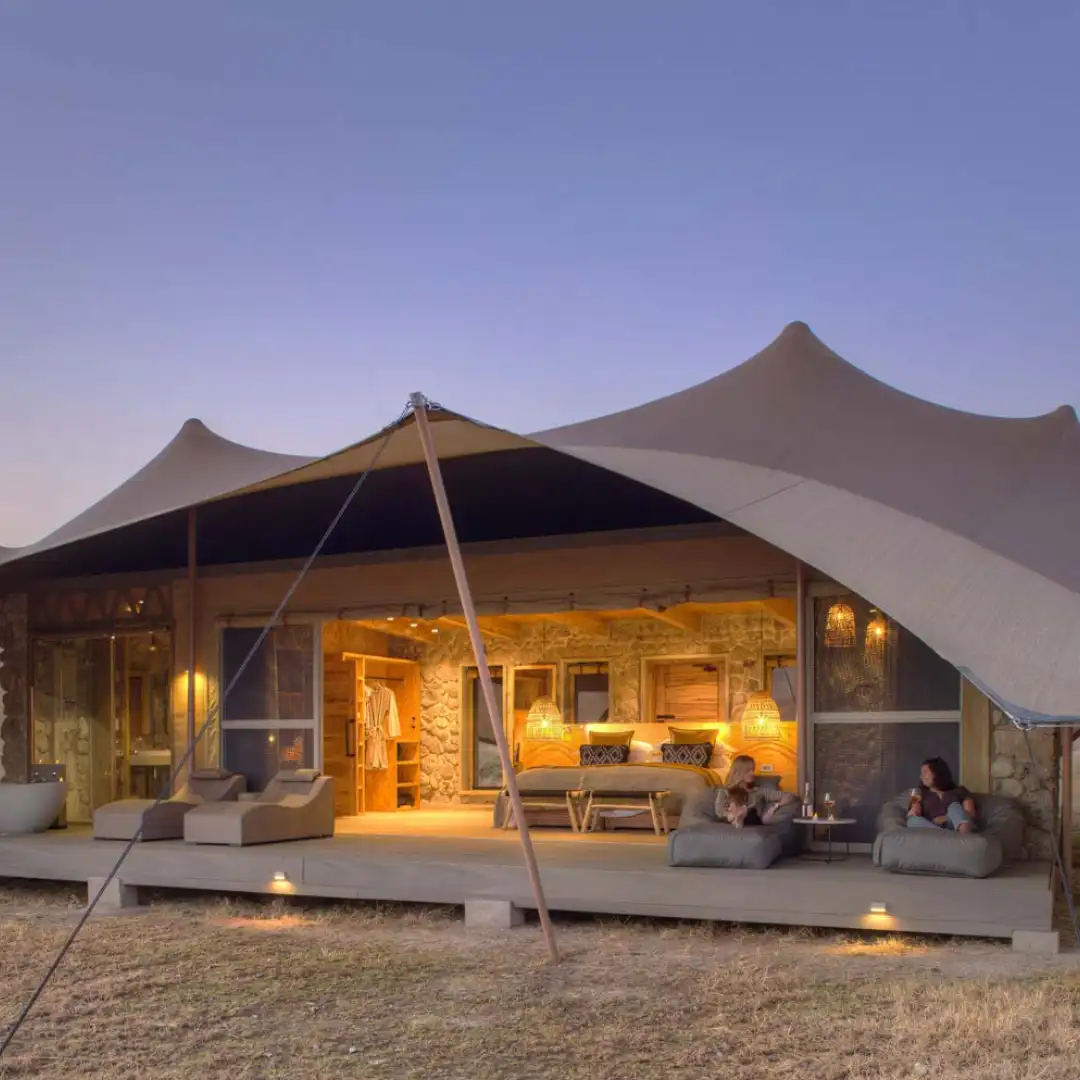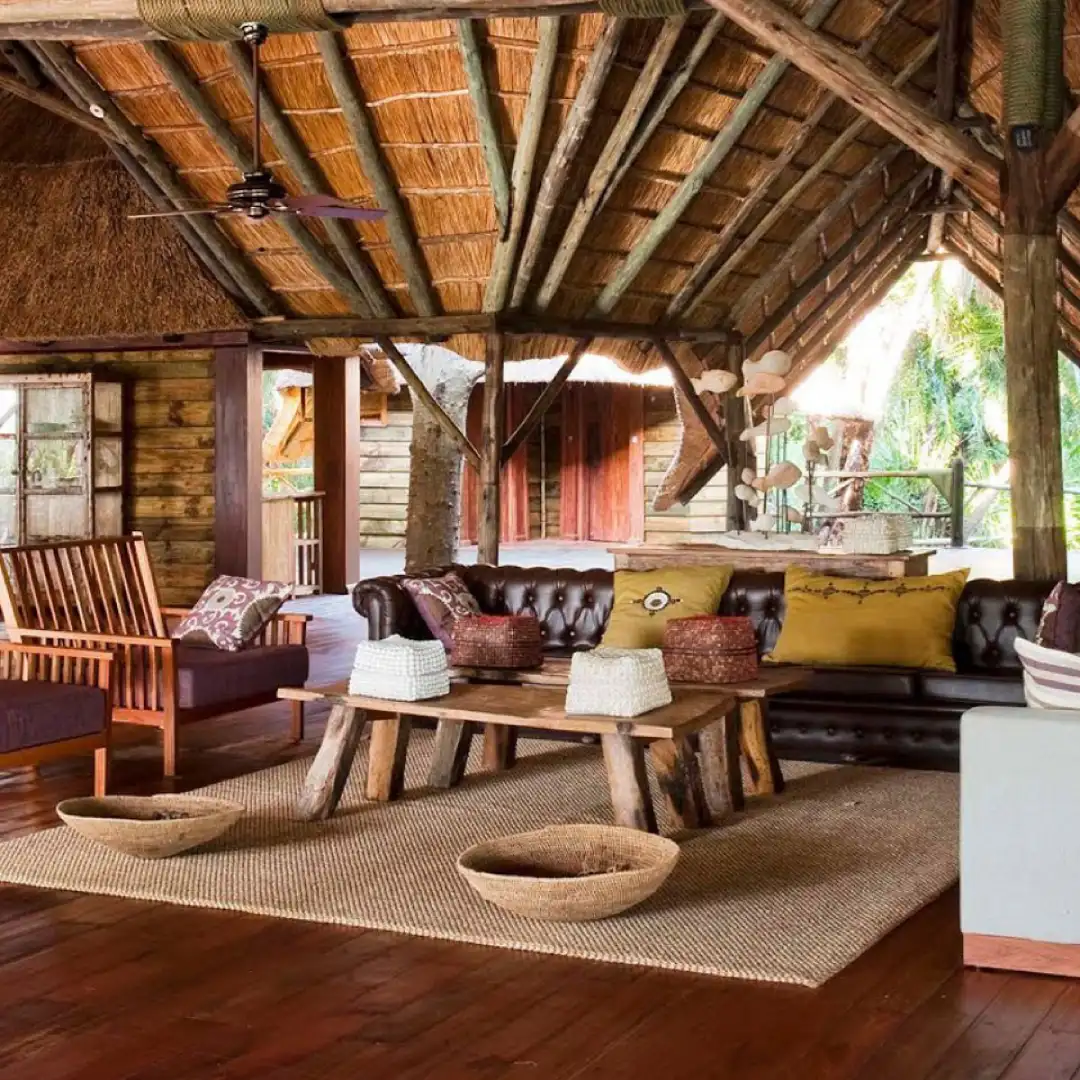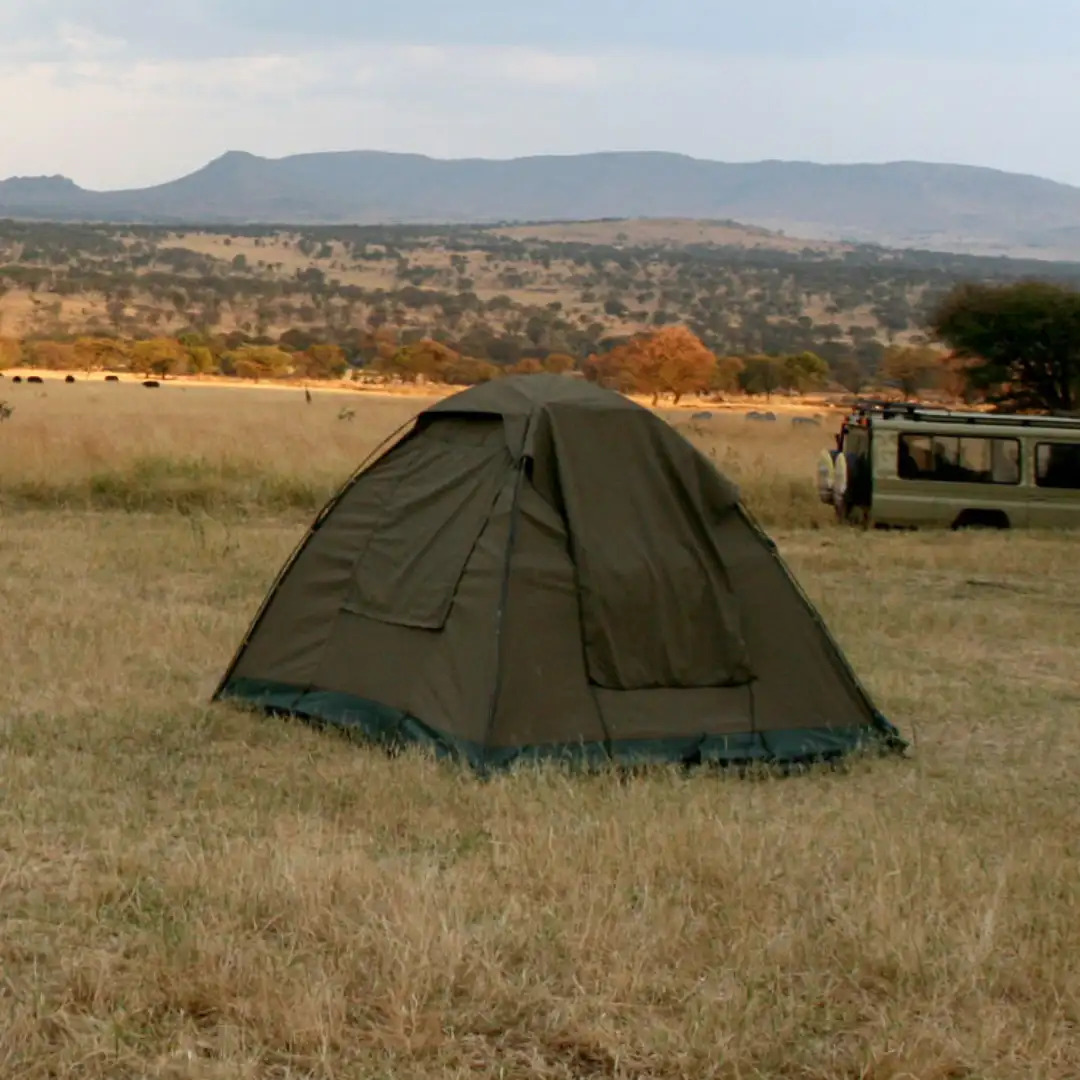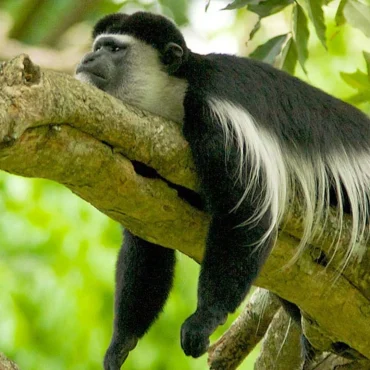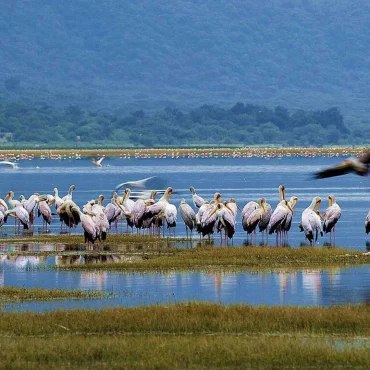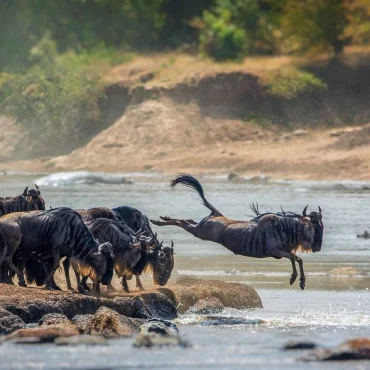Ngorongoro Crater
Ngorongoro Crater is a huge, ancient volcano in northern Tanzania, not far from the town of Arusha. This massive crater covers over 100 square miles and is encircled by tall, forested walls.
Formed about 2.5 million years ago when a giant volcano erupted and collapsed, it’s now a beautiful, wide-open space filled with grass and home to lots of wild animals.
Known for its incredible wildlife density, Ngorongoro is one of the best places to see the Big Five, all set against the dramatic backdrop of the crater’s towering walls.
- Ngorongoro is packed with lions—more here than anywhere else in the world!
- Around Lake Magadi, you’ll see lots of pink flamingos wading and feeding.
- The grassy floor of the crater is a perfect spot to see elephants, rhinos, and leopards.
- Local Masai people also bring their animals here to graze, mixing old traditions with wild nature.
Visiting Ngorongoro Crater lets you see incredible wildlife up close in a truly stunning setting. It’s a special place that shows the beauty of nature and the local culture together.
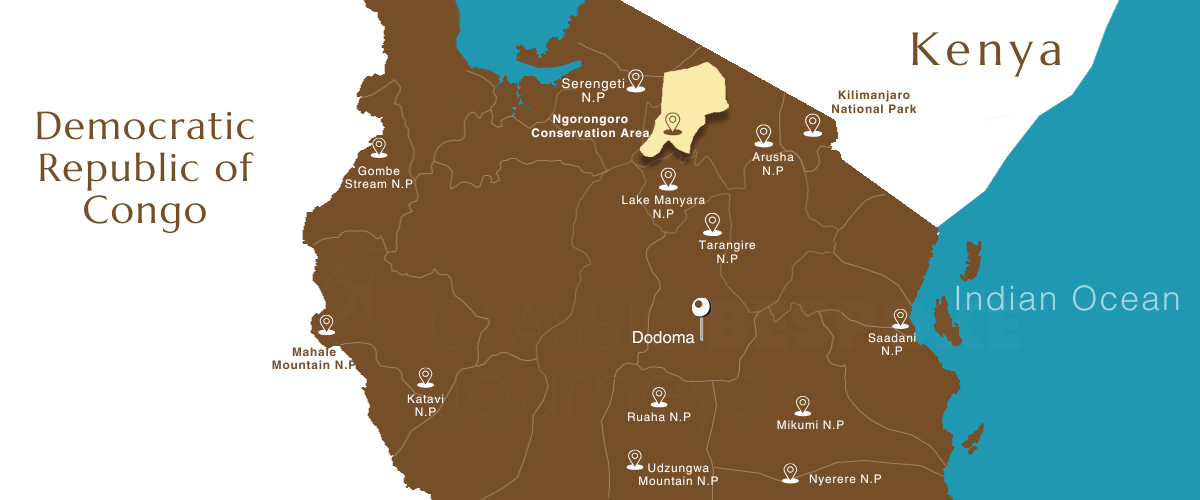
Best Time To Visit
Ngorongoro Crater is Africa’s wildlife haven, where the earth cradles a breathtaking array of animals against a backdrop of ancient volcanic beauty.
The best time to visit Ngorongoro Crater is during the dry season from June to October when the short grass makes it easier to spot wildlife, and the weather is mostly sunny, though chilly in the mornings and evenings.
However, the wet season from November to May offers lush, vibrant landscapes and excellent bird-watching opportunities, with migratory birds present. Fewer tourists in April and May mean a quieter experience, though the longer grass can make animal spotting more challenging.


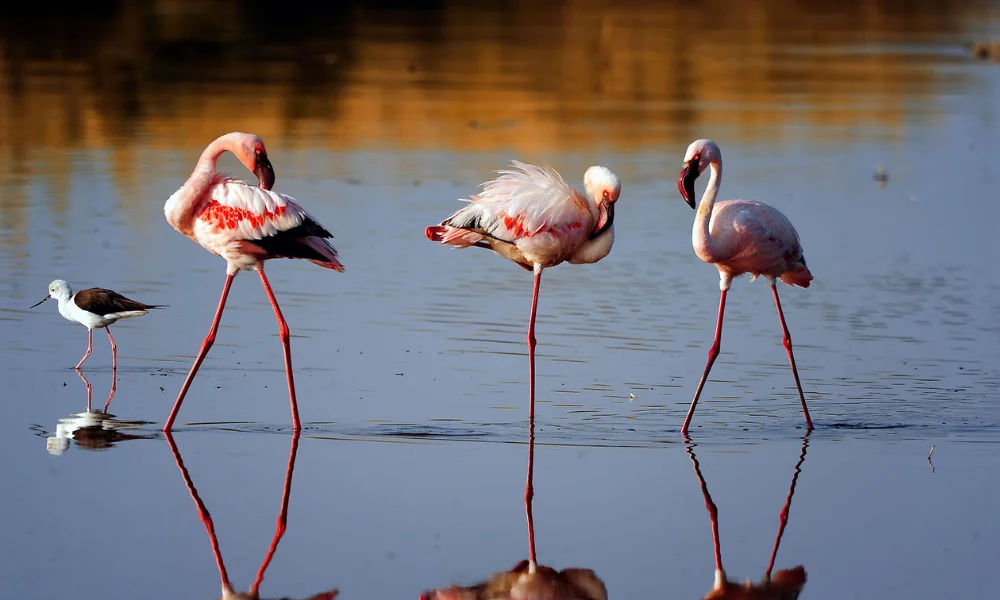
Wildlife
Ngorongoro Crater is a haven for the Big Five and is celebrated as Tanzania’s top spot for encountering these majestic creatures. The crater floor is alive with a diverse array of animals, making it a hotspot for predators, including the world’s densest population of lions and plenty of spotted hyenas.Smaller carnivores like golden jackals, black-backed jackals, and bat-eared foxes also roam the area. Keep your eyes peeled for the elusive serval, which may be spotted hunting.
The crater is especially famous for its black rhinos, a rare sight in many parts of Africa. Large buffalo herds graze the plains, and while elephants are less common, the crater is home to several impressive tusked bulls. While giraffes are seen in the surrounding areas, the crater’s steep walls prevent them from entering, creating a natural boundary for these tall mammals.
Ngorongoro Crater FAQs
Ngorongoro Crater often called the ‘Garden of Eden,’ is the world’s largest intact volcanic caldera and is known for its endangered species like rhinos.
About 2.5 million years ago, a large volcano erupted and collapsed, forming the impressive Ngorongoro Crater we see today.
The steep walls of Ngorongoro Crater naturally confine most animals within, creating a unique environment where wildlife such as lions and elephants thrive.
Animals find it difficult to climb out due to the crater’s steep slopes, resulting in a rich, self-contained ecosystem teeming with diverse wildlife.
The Ngorongoro Conservation Area Authority protects wildlife by regulating human activities and fostering harmony between the Maasai people and the animals.
Why Visit Ngorongoro Crater ?
Heritage
Visit a UNESCO World Heritage Site rich in natural beauty and history.
Wildlife
Dubbed the "Garden of Eden," it teems with diverse wildlife and landscapes.
Culture
Experience the vibrant culture of the Maasai tribe in their traditional village.
Archaeology
Explore Olduvai Gorge, a crucial site for understanding human evolution.
Day-Trip
Ideal for a day tour, with ample wildlife visible in a compact area.
Scenery
Witness breathtaking sunrises and sunsets along the crater's rim.
Our Most Popular Tours
What Customers Say About Us
